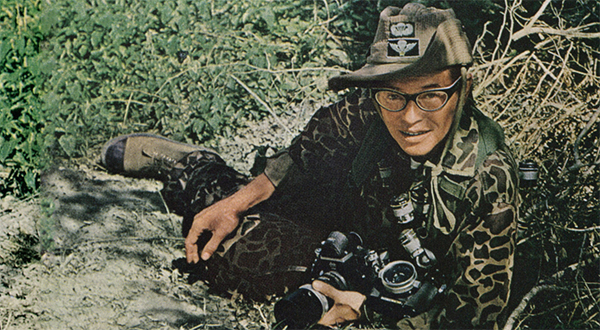Who is Dickey Chapelle?
Dickey Chapelle was born Georgette Louis Meyer on 14 March 1919 in Milwaukee, Wisconsin and became one of the most well-known photojournalists in the world and was a war correspondent during World War II through to the Vietnam War.
When she was 16 she attended aeronautical classes at MIT and then came home to work at the local airfield where it was her hope to learn how to fly airplanes and not only to design them. While working there Dickey entered into a relationship with one of the pilots and when her mother found out she was sent to live with her grandparents in Florida. While here she wrote press releases for an air show and this then led to an assignment in Havana.
How it Started
While working in Cuba one of her stories was noticed by the editor at Transcontinental and Western Air (TWA) and Dickey moved to New York where she started working for TWA. She met her husband, Tony Chapelle whom she divorced 15 years later, while taking photography classes with him. She later left TWA to put together a portfolio and sold it to Look Magazine.
Even though her photographic credentials were not as great as the best NRL Premiership odds, she was able to get a job as a war correspondent photojournalist for National Geographic. During one of her first assignments she joined the marines for the battle of Iwo Jima and she also covered the battle of Okinawa. She travelled extensively and would and covered many stories in war zones around the world.
Dickey was taken prisoner in 1956 during the Hungarian Revolution and was held for seven weeks. She also learned to jump with paratroopers, which later led to her receiving awards and she was highly respected by the military and other journalists.
How it Ended?

Even though she came out in support of Fidel Castro during his early years she was a very vocal anti-communist and her writings in the 1960s praised the US military advisors who were fighting in the Vietnam War. She was killed while in Vietnam on 4 November 1965 while she was on a patrol with a marine platoon.
The operation, Black Ferret, was a search and destroy which took place outside of Chu Lai in the Ngai Province. Her death was due to a lieutenant accidentally kicking a tripwire that had a mortar shell and hand grenade attached and a piece of the shrapnel hit her neck, which severed her carotid artery.
Henri Huet captured her last moments. Her body was taken back to the US by an honour guard of six marines and Dickey was laid to rest with a full marine funeral.
Dickey was the first female correspondent killed in action in the Vietnam War, and won several awards including the George Polk Award, a Distinguished Service Award given to her by the US Marine Corps Combat Correspondents Association and Best Use of Photographs by a Newspaper from the National Press Photographers Association.

